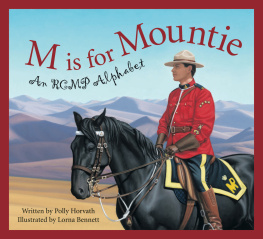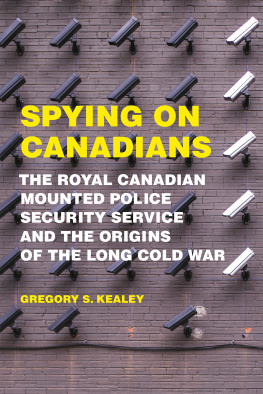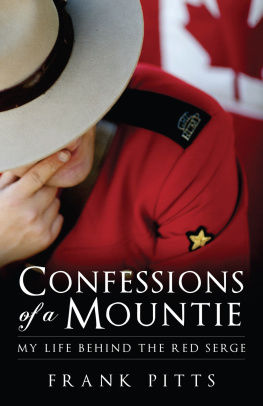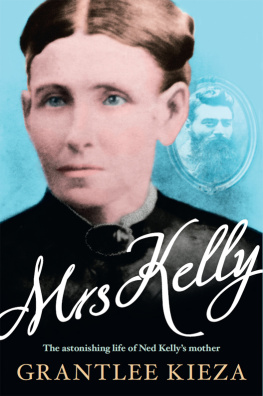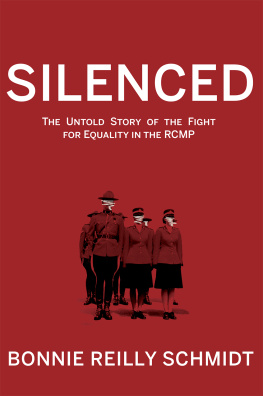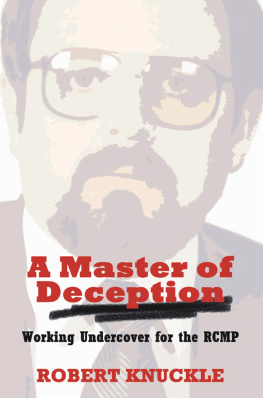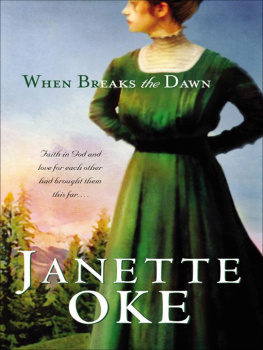
M is for Mountie
An RCMP Alphabet
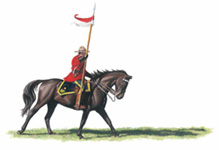
Written by Polly Horvath and Illustrated by Lorna Bennett
Thank you to the RCMP Archives, and the Glenbow Museum Archives
in Calgary, photo numbers: NA 1237-1, NA 354-1, and NA 17-5.
Lorna
Sleeping Bear Press wishes to acknowledge Pete MacCormack,
Director of Licensing & Brand Management, The RCMP Foundation,
for assistance in providing resources and materials.
Text Copyright 2008 Polly Horvath
Illustration Copyright 2008 Lorna Bennett
All rights reserved. No part of this book may be reproduced in any manner
without the express written consent of the publisher, except in the case of brief
excerpts in critical reviews and articles. All inquiries should be addressed to:
Sleeping Bear Press
310 North Main Street, Suite 300
Chelsea, MI 48118
www.sleepingbearpress.com
2008 Sleeping Bear Press is an imprint of Gale.
Produced under License from the Mounted Police Foundation of RCMP GRC
Printed and bound in China.
10 9 8 7 6 5 4 3 (case)
10 9 8 7 6 5 4 3 2 1 (pbk)
Library of Congress Cataloging-in-Publication Data
Horvath, Polly.
M is for Mountie : an RCMP alphabet / written by Polly Horvath;
illustrated by Lorna Bennett.
p. cm.
Summary: The traditions, mission, and important work of the Royal Canadian
Mounted Police are explained using the alphabet format. Topics include badges,
investigation, Musical Ride, and rank. Poems are used to introduce each subject
accompanied by side-bar text filled with detailed textProvided by publisher.
ISBN 978-1-58536-267-7 (case)
ISBN 978-1-58536-451-0 (pbk)
1. Royal Canadian Mounted PoliceJuvenile literature. 2. Alphabet
booksJuvenile literature. I. Bennett, Lorna, 1960- II. Title.
HV8157.H67 2008
363.28dc22 2008009543
To Mary Wong
POLLY

For Melody Jolane Scout, Cowboy Dave Manzer,
Garry Chaba, and Morris Crow
in loving memory.
LORNA
A
The title Mountie refers to a member of the Royal Canadian Mounted Police force (RCMP), which is the federal and national police force of Canada.
Most people think Hollywood came up with the saying, The Mounties always get their man. Perhaps this is because of all the colourful Mounties that Hollywood has created over the years. But actually the phrase first appears in a report out of Fort Benton, Montana, in 1877 detailing an incident from Fort MacLeod in what is now Alberta. Captain William Winder and Major Acheson Gosford Irvine of the North-West Mounted Police (NWMP) captured three whiskey smugglers. The report went on to say that, although the Mounties lost their horses, they fetch their men every time. This was later repeated and eventually evolved into The Mounties always get their man.
There have been many famous fictional Mounties who helped create the romantic image of the Mountie who always got his man. They include Dudley Do-Right from the Rocky and Bullwinkle cartoon show, and Nelson Eddy and Howard Keel who were singing Mounties in the movie Rose Marie. Movie stars Randolph Scott, Robert Preston, Dick Powell, Tyrone Power, Robert Ryan, Donald Sutherland, Lee Marvin, and Peter OToole have all worn the famous red uniform and Stetson hat to play movie Mounties.
A is for Always get their man
This motto is an old one and we certainly hope they do. But lets be a little clearer: They arrest their women, too.
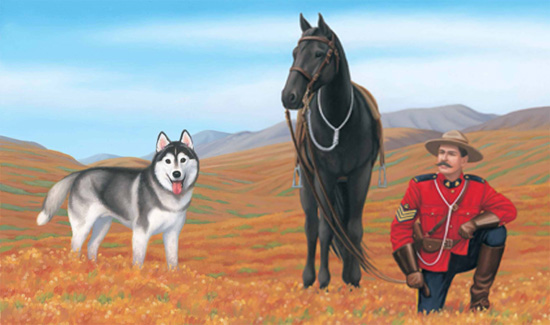
B
The RCMP has many badges or insignia. The first badges appeared around 1876. They featured maple leaves, buffalo heads, a scroll with the title of the force, and St. Edwards Crown. Later the crown changed to reflect the reigning monarch of the time. Today that would be Queen Elizabeth II. Roughly translated, the motto written on the badge is Maintiens le droit or Upholding the right.
There are many different kinds of badges. Just as guides and scouts wear sashes decorated with badges they have earned, there are RCMP badges showing special skills that have been mastered. There are skill badges for Musical Ride, Emergency Response Team, First Aid Instructor, Rough Rider, Dog Handler, Instructor, Forensic Identification Specialist, and Piper.
There are badges for service length: 5 years; 20-25 years; and 30-35 years. The most prestigious service badge is the RCMP Long Service Medal. It was approved by Royal Warrant and first issued in 1935. The medal is awarded to regular members of the force who have finished 20 years of good conduct and satisfactory service.
There are corps identity badges and a flying badge for those in air service. There are three appointment badges: Special Constable; Auxiliary; and Student. There are four sharpshooter badges and twelve badges denoting rank.
Depending on the dress, badges may be worn on the shoulders as slip-ons, or on shoulder boards or on the epaulettes.
B is for Badges
Buffalo and maple leaves, Maintiens le droit, they read. The badges of the officers express the Mounties creed.
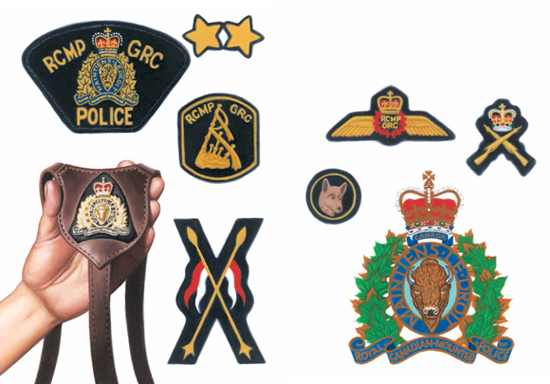
C
Young adults (male and female) who train to become RCMP officers are called cadets. To apply to be a cadet you must be of good character, speak fluently in either French or English, be a Canadian citizen, have a high school diploma or equivalent, possess a valid drivers license, be 19 years of age at the time of engagement, meet medical standards, be willing to relocate anywhere in Canada, and be physically fit.
Cadets train at a special centre in Regina, Saskatchewan, called the Depot. In addition to meeting skills and educational requirements, cadets must also undergo extensive physical training. Their training can be quite rigorous with various exercises, including double-time marching, long runs, stair climbing, or weight lifting. RCMP officers must maintain their fitness levels. An officer may have to chase a criminal, climb a fence, or defend a victim of crime. He must be alert and ready for sudden action, which requires a fit body. Basic training runs for 24 weeks; upon graduation, cadets can be sent anywhere in Canada.
The RCMP believes in preventing trouble before it starts. The cadets are also taught to look at other peoples points of view, an important tool in conflict resolution.
C is for Cadet Training
Cadets are taught to see from other points of view when called upon in emergencies to discover what is true.
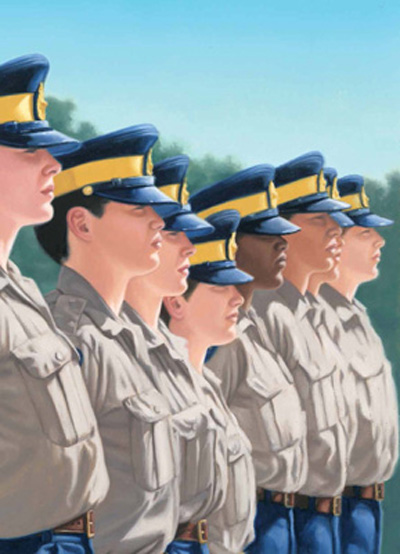
D
In 1933 Sergeant John N. Cawsey in Alberta used his German shepherd, Dale, to help him find a thief. Later, the judge presiding over the subsequent trial would not let the evidence that Dale had uncovered be used to convict the thief. In those days it was not established that a dog could assist in police work. But in 1935, after Dale had proved over and over that he was top dog at sniffing out crime, he became an official member of the RCMP. After that, a school in Innisfail, Alberta, was established to train dogs for use in police work. A breeding program was developed to produce dogs from Czecho- slovakian working dog lines.
Next page
